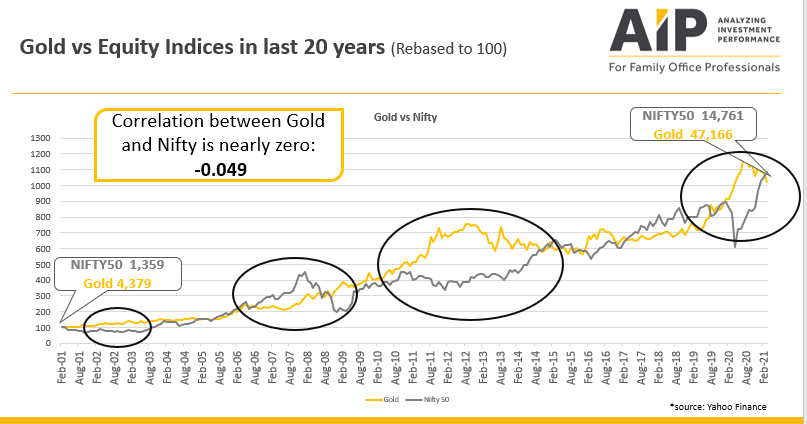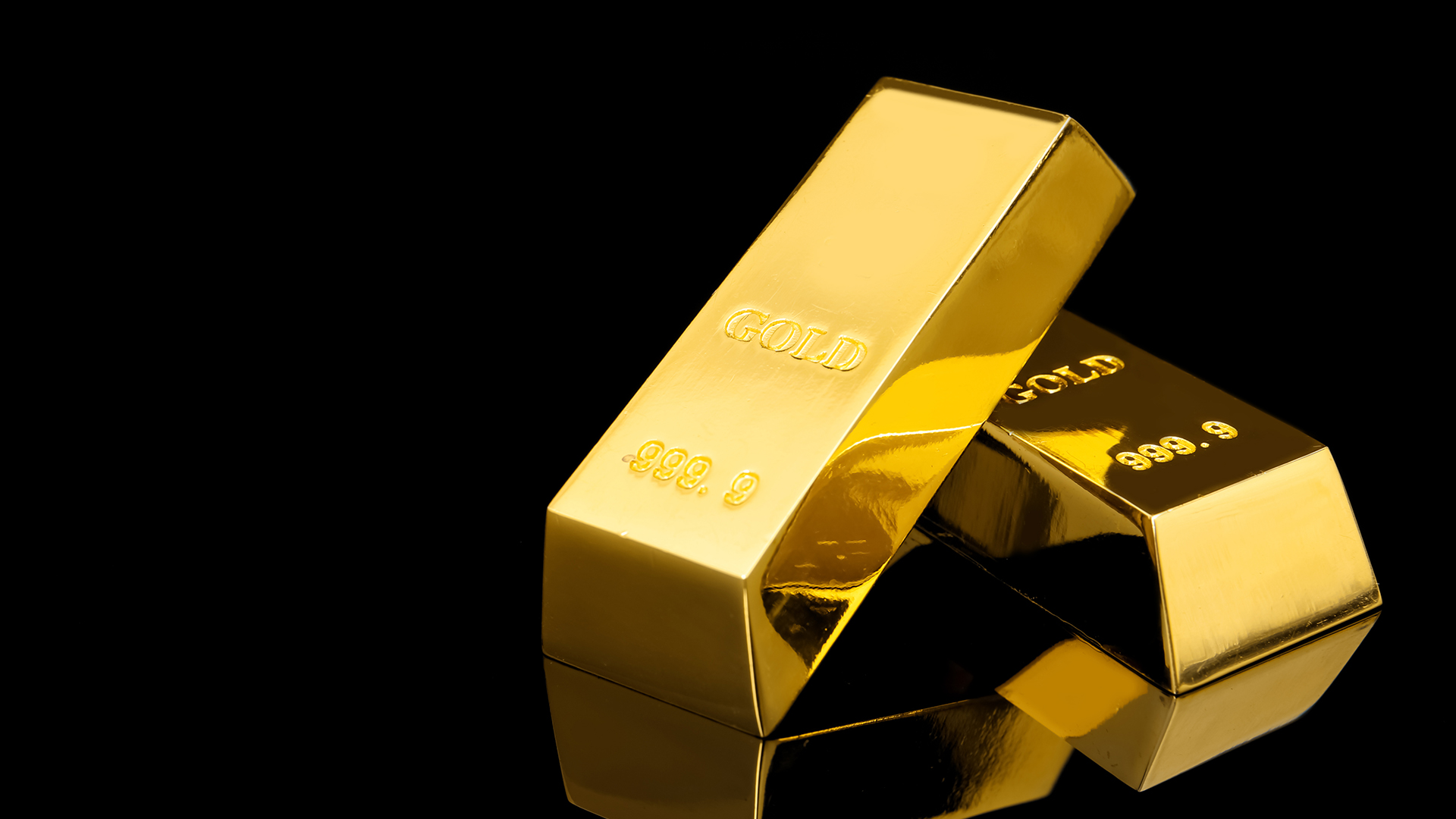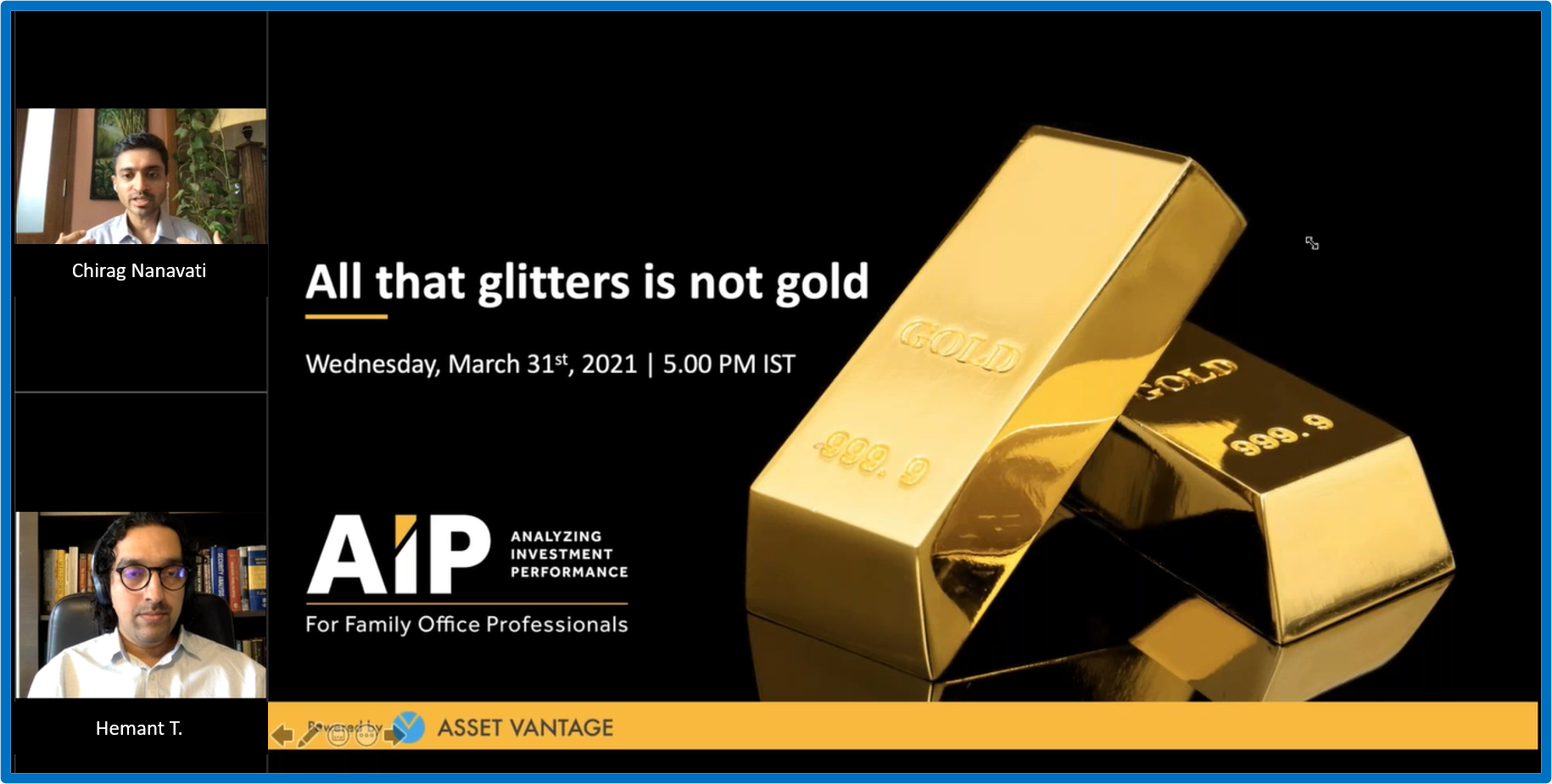The SENSEX and GOLD both rose from 5k to 50k over the last two decades. But are their returns the same?
The Indian love affair with gold transcends time—from an emperor’s dinner plates to the modern-day gangster’s pachaas tola (500gms) necklace. An adoring culture reveres the metal for festive purchases and wedding gifts as a symbol of luxury, wealth, and financial security.
Ostensibly, the markets seem to back this attachment to gold. Over the past two decades, gold prices have been at par with the Sensex, moving from slightly under INR 5,000 to INR 50,000.
Beyond these widely reported headlines, though, can we claim that the return on gold is similar to the stock market? And can investors make a like-for-like comparison?
Pricing it right
Investors make the mistake of comparing gold returns with the Sensex Price Index, which doesn’t show them the whole story.
Gold (excluding Sovereign Gold Bonds) offers returns, comprising asset and currency gains, only at the end of the holding period. On the other hand, stocks yield dividends, bonuses, and spin-offs in the interim.
The Sensex Total Return Index (TRI) captures the reinvested interim income on stocks, becoming the more accurate benchmark to gauge gold returns.
With TRI as the meter, we see that the gap between gold and stock returns increases significantly.
For more information on TRI, watch our webinar with Chirag Nanavati, MD, Asset Vantage
Additional charges, such as higher transaction costs and tax rates, reduce the effective gold returns. And if you hold physical gold, you also have to bear storage, transport, and insurance expenses.
Biting the coin
In India, there is a deeply held belief that gold prices are stable. However, the graph below shows an almost perfect inverse correlation between stocks and gold. This means that gold is as volatile as stocks. Additionally, the value of gold rises when stocks fall and vice versa. As a result, gold investments are a good hedge for a stock portfolio.

Gold remains a crucial part of every Indian investor’s asset base. It has deep cultural value and offers portfolio diversification to reduce overall risk. When evaluating any equity investment strategy, benchmarking it against the Total Return Index will give you a more accurate picture.






